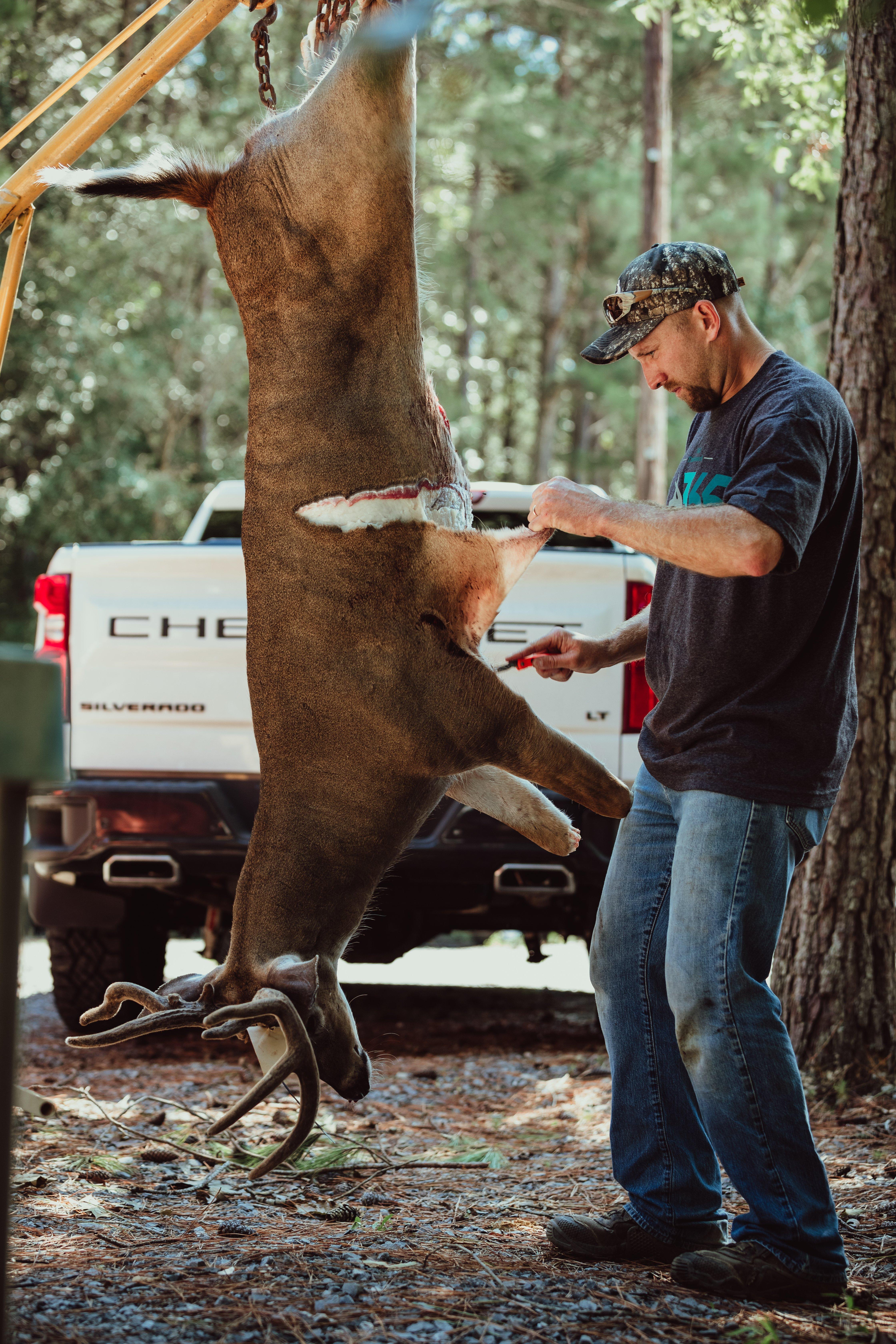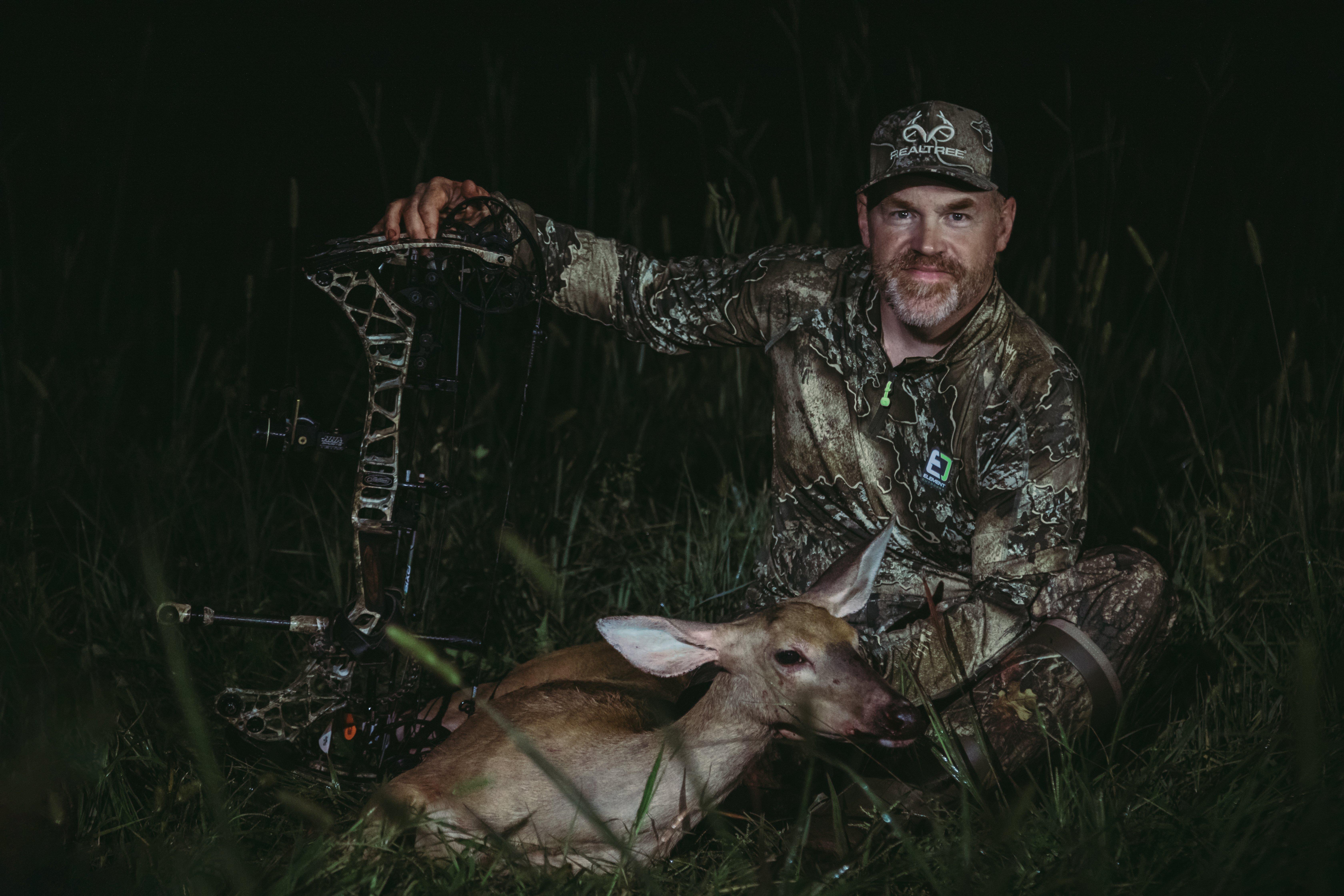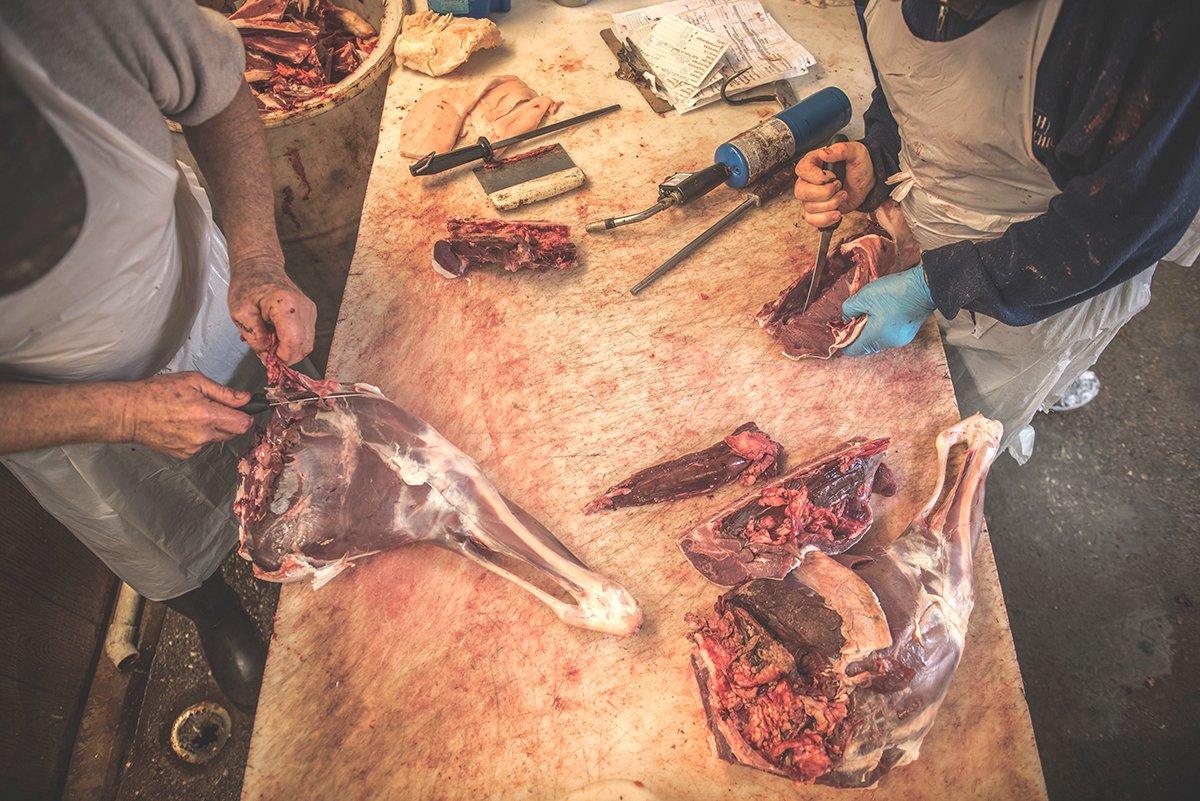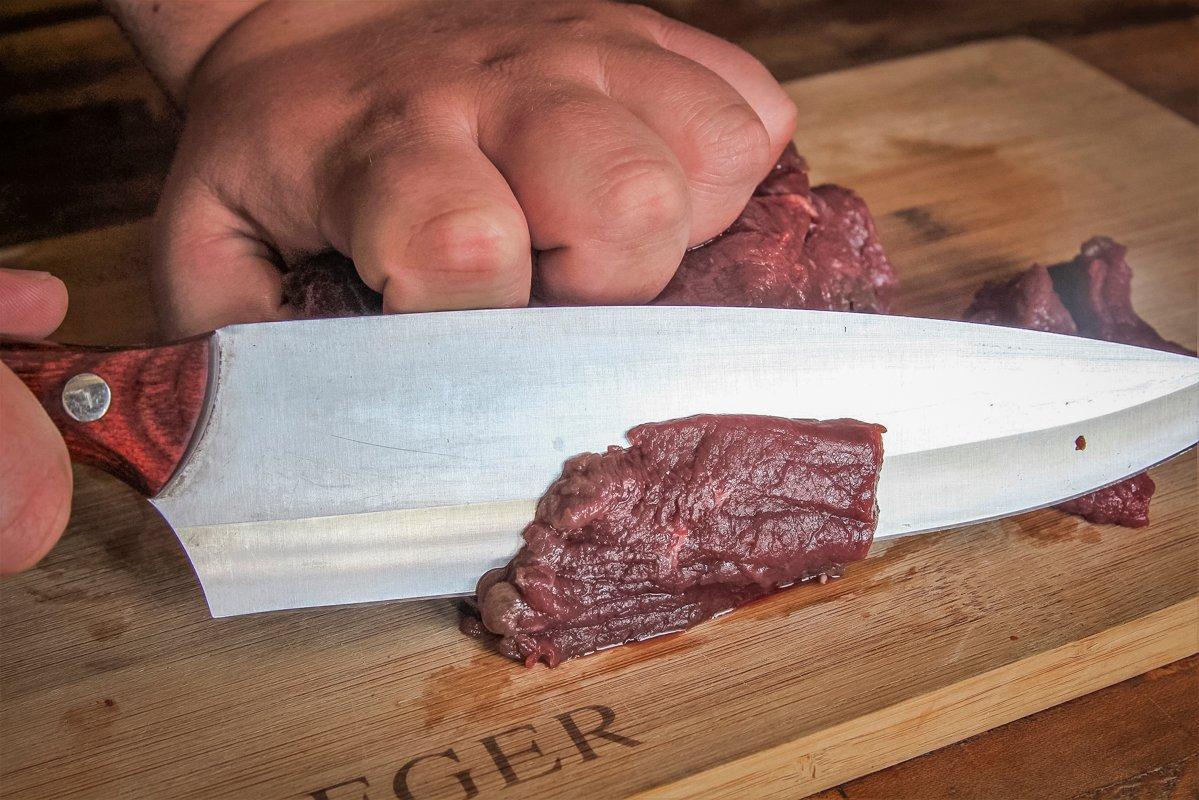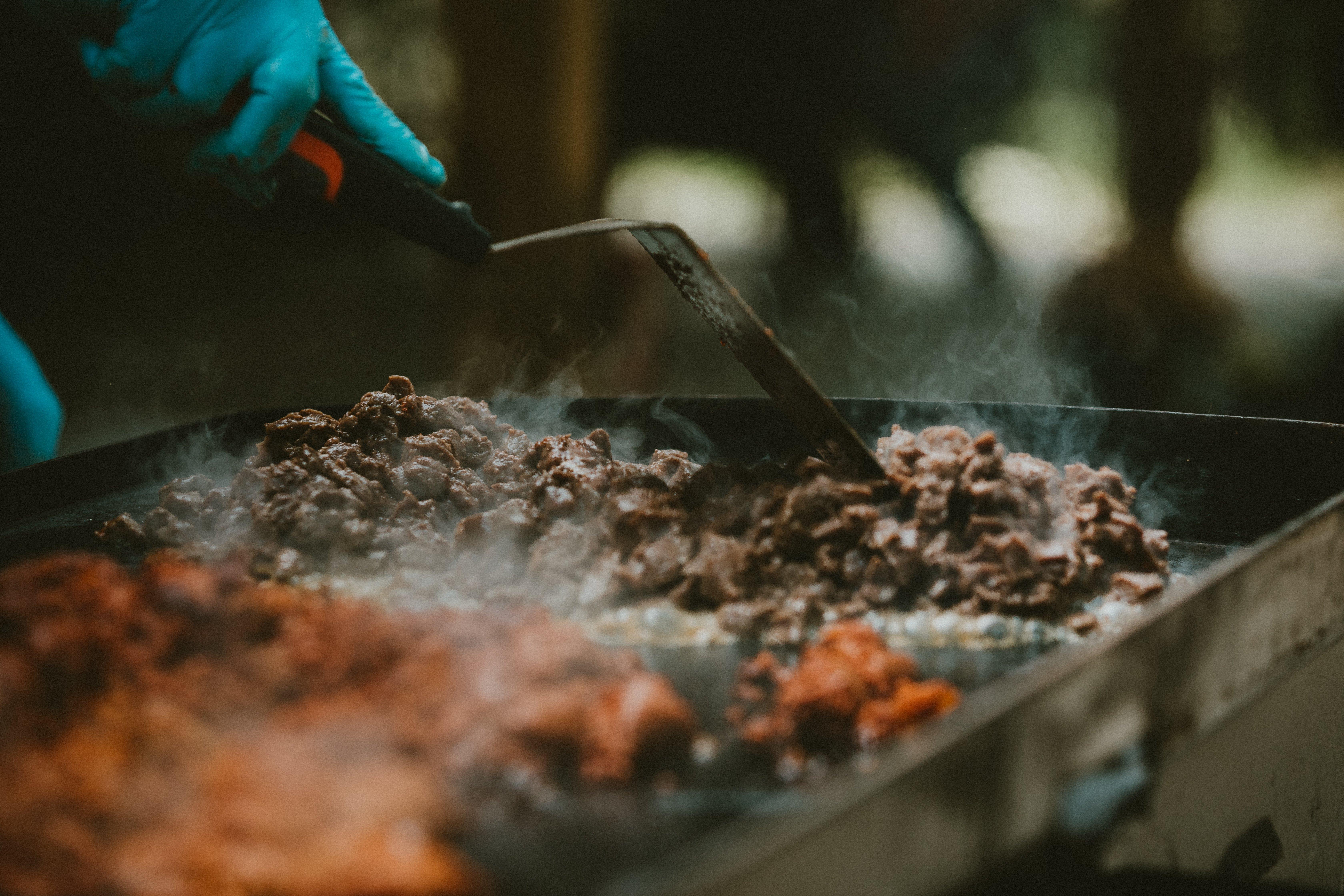Is your deer meat tough, dry, and gamy? It shouldn't be. Check out this list of 12 deer-butchering sins to find out why your venison tastes bad — and how to make it better
I'm often amazed at the people, deer hunters included, who tell me they just don't like venison. That statement is usually followed by a qualifier: it's tough; it's gamy; it's dry. And so on.
I've eaten a lot of good deer meat. But I've eaten some really bad deer meat, too. I'm only a self-trained butcher, but I've been processing five to six deer a season for the better part of 20 years. When it comes to cooking, I'm no Scott Leysath or Michael Pendley, either, but my wife, kid, and I do eat venison in some form two or three meals per week, year-round. I think we eat pretty good.
Some things consistently make venison really tasty. And some things will ruin the flavor, too. Here are a dozen of the worst offenders.
1. Poor Field Care
In the real world of hunting, things happen. We all make bad shots on occasion. And while we know not to push a deer that's been hit marginally, realize that the longer it takes for the animal to die and the farther it runs, the more adrenaline and lactic acid builds up in the animal's system and muscles. Ever had a glass of good-tasting acid? I didn't think so.
The faster a deer hits the ground and can be field-dressed, the better the meat will be. Some of the best-tasting deer I've ever had have been shot in the head with a gun. The animal is killed instantly, and the meat is uncontaminated by blood and entrails from the chest cavity. That said, head shots are risky. The lungs remain the best place to aim.
2. Failure to Cool Quickly
Internal bacteria rapidly takes over after death, expelling gases and causing the animal to bloat. That's the first step in decomposition. This process is accelerated in warm weather. Learn how to field-dress a deer, and get to it ASAP. Removing those organs is the first step in cooling the animal down.
On a cold night — in the mid-30s or lower — a deer can be left hanging skin-on overnight. In especially cold weather, some hunters like to age a deer in such a manner for several days (more on aging in a bit). I live in a warm climate, and most of the deer I shoot in a season's time are during early bow season, so I don't have that luxury. When I find my deer and get it field-dressed, I plan on having it skinned, quartered and on ice within the hour.
3. Shooting the Wrong Deer
Modern deer hunters are in tune with deer herd management. We've learned of practices that contribute to the health of a herd, including which deer to shoot. Given the chance, most of us want to shoot a mature buck with big antlers. Me included.
Old bucks are perfectly edible but rarely the best. Muscles get tougher with use and stringy with age. An old buck that's spent a full autumn fighting, rubbing, scraping, and chasing does will be lean. Expect chewy steaks. Same thing goes for an old doe that's burned all her summertime calories producing milk to nurse fawns. I usually make hamburger, sausage, and jerky out of such animals.
For steaks, you can't beat a young, crop-fed deer. Deer that spend a summer munching on corn and soybeans have an easier life — and more fattening food sources — than those that spend a lifetime wandering the big timber in search of scattered mast and browse. The tastiest venison I've ever eaten came from a 1 1/2-year-old forkhorn shot through the neck near a picked cornfield during early bow season.
That young deer had nothing to do all summer except get fat. Am I saying to whack every young buck that walks by? No. But I am saying if a deer for the freezer is your goal, young bucks from the early season are usually good eating and have more meat than does to boot. If you want to shoot one and it's legal, go for it. You don't owe anyone an apology.
4. Failure to Age / Purge
I've been told that aging venison on ice is a mistake, but I don't buy it.**
The mercury rises above 50 degrees on most days of deer season in my area. That's too warm to let a deer hang, so icing them down is my only option. I line the bottom of a cooler with a layer of ice, add my deer quarters on top of that, and then cover them with more ice.
I keep the cooler in the shade with the drain plug open and on a downhill incline. That's very important. The idea is to let the ice slowly melt and drain from the cooler. This not only keeps the meat cold, but purges an amazing amount of blood from it. Do this for at least two days, checking the ice a couple of times per day in especially warm weather. (Note: If you do this without a drain plug, you'll get the opposite effect — deer quarters that are essentially marinated in bloody, dirty water. Does that sound tasty? Didn't think so.)
5. Dirty Knives and Power Saws
A deer's legs are held together just like yours: with ball-and-socket joints and connective tissue. Learn where these are, and you can cut an entire skinned deer apart within minutes with a good pocketknife. Laying into a deer's legs and spine with a power saw puts bone marrow, bone fragments, and whatever mess was on the saw blade into your venison. Would you season your steak with bone fragments and wood shavings? Didn't think so.
I keep three sharp knives handy when I'm cleaning a deer. One is for field-dressing. This one will be a stout knife with a drop point for prying through bone. Another is for skinning. Though a skinning blade with a gut hook is nice to have, I've been using a long-bladed fillet knife the last couple of seasons, and it works beautifully. These knives can be honed to a razor's edge and quickly resharpened. Other than quickly dulling a knife's edge by slicing through hair, skinning is not taxing on a knife's blade, so a flexible fillet knife works fine. Finally, I swap over to another knife — again, with a heavier blade — for my quartering. The point to take from all this is to keep your knives separate so you reduce contamination of the meat with blood and hair.
6. Poor Trimming
Unlike beef fat, deer fat does not taste good. Neither does the sinew, silver skin, and other connective tissues holding the various muscle groups together. Venison, whether destined for steaks or hamburger, should be trimmed free of anything that's not rich, red meat.
7. Burger Is Too Lean
Ironically, because fat needs to be trimmed away for the best flavor, venison often becomes too lean for hamburger purposes. Patties made for grilled double cheeseburgers often fall apart soon after hitting the hot grate. The solution is to add some fat, either beef or pork, when you're grinding venison. We use cheap bacon, mixed at a rate of 5:1 (5 pounds of venison per pound of bacon). It makes our patties stick together, and the bacon adds a great flavor.
8. Using a Cut-Rate Processor
Some commercial deer processors do a great job. But some do not. I once took a deer to a processor, filled out my paperwork, and watched him disappear to the freezer room. He weighed my animal and returned with a corresponding amount of packaged, frozen venison. We mix all our meat together and package a lot of burger at once, he said.
For all I knew, the deer I was getting could've been gut-shot, left to hang in 90-degree heat, and then dragged along a blacktop road en route to the processor. No thanks. Insist on getting your own deer back when you have processing work done.
9. Marinade Problems
First, soak for 48 hours in Italian dressing …
It's enough to make a venison lover cringe. Look, Italian dressing and BBQ sauce taste fine, but you'd better be a ravenous fan of them if you're using them to soak venison steaks for two days. At the end of those two days, your steaks will taste just like … Italian dressing or BBQ sauce.
There's nothing wrong with a little splash of flavor enhancement, but try lighter flavors that complement the flavor of deer meat, and keep the marinade time short. My usual maximum is three or four hours. A favorite marinade for grilled venison steaks is a mixture of olive oil, a spoonful of balsamic vinegar, a spoonful of Worcestershire sauce, some minced garlic (with the juice), a squirt of mustard, and salt and pepper to taste.
10. Cooked Too Cool, for Too Long
Venison recipes, especially grilled recipes, often call for removing the meat after a couple of minutes per side. For many, the result of that is This is raw and gross. And so they place it back on the grill. After a while, it turns gray, chewy, dry … and still gross.
Grilled venison is best when eaten with a medium-rare interior, but the outside needs to be cooked. In order to do that, your grill needs to be hot enough to instantly sear the meat surface and lock in those flavors and juices. Flip your venison steaks one time. If you don't have nice grill marks after three or four minutes, the grate isn't hot enough.
11. Improper Packaging and Freezing
Freezer burn doesn't help the flavor of ice cream or anything else, deer meat included. Modern vacuum packaging systems are handy and save on space, but I've used some that resulted in freezer-burned meat after a few months. If you're buying a vacuum-sealing unit, get a good one.
We package our deer the old-fashioned way, first wrapping each portion in clear plastic wrap, and then covering that with heavy-duty freezer paper. Every package is clearly labeled, so we not only know what cut of meat is inside and when it was killed, but also which deer it came from. If one animal proves especially tough, we know to use that meat for slow-cooking recipes.
12. Getting Too Fancy
There's no big mystery or secret to cooking venison. Treat it as you would treat very lean beef, and you'll get outstanding results day in and out. We substitute deer burger for beef hamburger in virtually everything — chili, tacos, sloppy Joes, burgers on the grill, spaghetti, and who knows what else. We never plan on a wild game night at the house. We just plan to cook dinner, and that usually means wild game by default.
(**Editor's Note: We originally posted this article in October 2012. It's been updated with some new photos. I still stick to all the advice here, too — except that I have come to prefer dry-aging venison in a refrigerator or walk-in cooler whenever possible, over aging it on ice in a cooler. Still, dry aging is not always an option, and when it's not, deer meat on ice tastes just fine. — Will Brantley, author)


